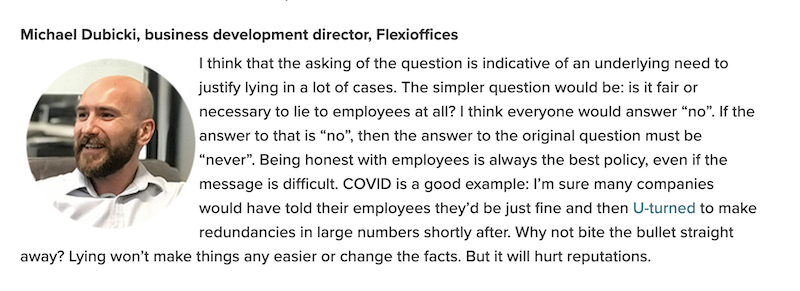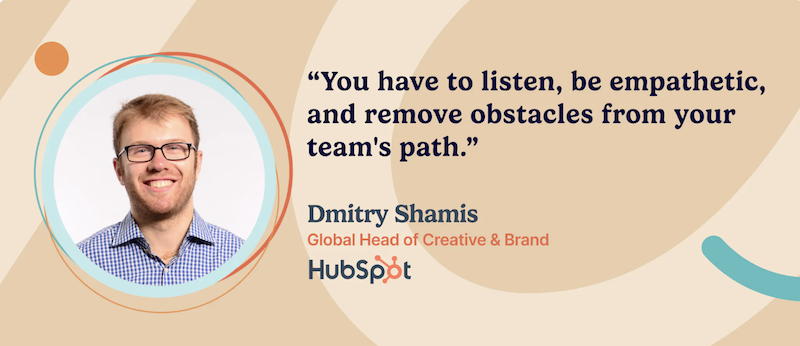There are many ways to empower the team members within your agency or studio and the list below worked quite well for me leading multi-disciplinary creatives, project managers and developers. Empowering teammember's is so important to a companies culture I thought it deserved it's own phrase: Empowerteam.© This can be summed up into one thought: Retaining and growing top talent which leads to success for all.
What exactly does it mean to empower others in the first place? Forbes wrote in Five Strategies To Empower Your Employees (1) that “empowering employees means providing them with the resources, power, trust and time to complete tasks and tackle responsibilities. I've found that empowerment allows employees to grow in confidence, competence and skill in the workplace. It's the antithesis of micromanagement.”
Empowerteam: Retaining and growing top talent which leads to success for all.
If you’re an micromanager there’s really no reason to continue reading. They are toxic and destroy cultures through insecurity and bullying. Competent leaders delegate and scale through other's, especially in creative companies where critical thinking is at the forefront of success.
Web designers, screen designers really, have a tendency to do vs learn too. For good reason too. They are focused on the design system created to simplfy and unify the work. Repetitive approaches are made into templates for consistency sake. There is logic in this, but it also tends to stifle creativity. More and more tall sticky headers can be seen on websites. “Branding blocks” and navigation menus that have a fixed position and take up a significant amount of space. They stay glued to the top of the browser window (the “sticky header”) and often block the content as it scrolls underneath them. (4) A comfortable if not boring approach that in 10 years will be frowned upon. Challeging UX designers to think outside the preverbial box is surprisingly, well challenging, but once they see that responsive design techniques make it possible to design different solutions for different platforms they respond positively. Designers should use their best judgment and not be afraid to innovate, but to ensure great website usability it would serve them well to test their design thoroughly with real-world users.
1. Stop calling them employees.
There's a huge difference between and employee and a team member. The simplest is that one works for you and the other works with you. Thinking of everyone who works for you as employees sets a class distinction and unnecessary hierarchy, as they already are well aware of this reality. Dental Hygiene Products (2) wrote (I know but this is spot on) that: “Team members take direction, they show initiative and they look for ways to be productive member of the team. Employees wait to be given a task and sometimes complain about it, then possibly accomplish it and wait for the next task. There is a big difference between obedience and commitment.” (2) It couldn’t more accurate and it shows there’s no different in industries either.
2. Communicate openness to ideas.
There's a saying in the advertising industry that it doesn’t matter where the idea come’s from, just that it is unique and on strategy. It’s very true. Many times executive leadership will set the strategy and key insights, but the actual big idea for a product launch or brand campaign will come from those not at the stakeholders table. Ex Google Executive Marissa Mayer, gave an interesting speech at Stanford entitled: “Ideas Come From Everywhere” with some expansion on how some innovations came to light at the “Don’t Be Evil” company.
3. Support personal development.
The concept of paying for University or Trade School incentives is not new, but few companies actually allow reimbursement in a program for all levels of staff. Skillset training is a needed reality in an advertising creative department as technology continues to advance. This is also true for all other departments. A great article on how to nurture and retain talent by providing them with personal development opportunities is also written by Forbes: “13 Ways To Regularly Support Your Employees' Personal Development.” They list very specific details and options to follow like “Creating Growth Plans” that are more than just lip service.
4. Recognizing positive behavior.
Rewarding, either financially, through relevant gifts or praise, positive behavior will lead to positive morale and a boost in productivity. “When employees are recognized for productive behaviors, they are much more likely to repeat those behaviors. This is empowering to employees because it shows them that their efforts are noticed, valued and appreciated.” (1) Keep in mind leadership must treat everyone equally meaning any positive behavior should be positively recognized, not just the top performers.
5. Don't lie.
This might seem so obvious for most and so shocking for the rest as some literally lie to their teammates to either appease or manipulate. The short term results of a disingenuous approach will always come back ten fold in the negative destroying interoffice trust. Consistent and intentional lack of transparency severs trust in leadership. Phrases like, “we bring joy,” “delight” or “happy employees, smiling customers” is fake and people see its disingenuous. Those that use these vapid phrase are viewed as duplicitous, shallow or worse, incompetent. No one wants to be loyal to an unethical manager and in time no one will. There is never a need to justify lying. That being the case there are real cases where full transparency is not beneficial to anyone. An example would be divulging salaries. This would be considered destructive and in most cases against company policy. Unfortunately, lying for the most part is not.
6. Honest feedback.
Constructive criticism is a necessity for a healthy culture, but many executives are intimidated by giving it out today due to the woke mind virus that has infected and weakened the new generation. Other’s, narcissists, use critiques as a way of flexing their perceived power, instead of building up a teammate so they can grow in their profession and master their craft. Constructive criticism is another aspect of transparency and goal setting. As a creative when critiquing work it is important to stay focused on the goals and strategy of the problem one is solving vs the subjective nature of the ideas. Focus on encouragement vs criticism. Empathy must play a role in your teams relationship for trust to flurish.
7. Pet policies.
As a dog rescuer I find that allowing pets into the studio or office has a massive upside for the team. There are so many positives it’s hard to know where to begin. A study by Virginia Commonwealth University found that when people had their pets around during the workday, they had much lower stress levels than those who had to leave their furry friends at home. "It's a low-cost wellness benefit, and it could be a recruiting opportunity.” There are some realities and risks as well. Aggressive or unsocialized animals must be retrained and that may be a great way for a company to help grow a team member too. It’s amazing how AKC Puppy Kindergarten and Canine Good Citizen classes not only benefit an animal, but an animal’s owner - for life.
8. Clear expectations.
What’s the strategy or path forward? In order for employees to feel empowered, they have to know what’s expected of them, even if they’re not given exact, step-by-step instructions on how to accomplish everything (remember, micromanaging is the opposite of empowerment). “You must balance clear expectations with the freedom for employees to make their own decisions and complete tasks in ways that work for them. And then, as mentioned above, make sure to provide helpful feedback to guide them on their way to autonomous success.” (1)
9. Fitness.
Many companies offer gym memberships as incentives as Corporate gym memberships can often be written off, for tax purposes, but few people actually use them. Also known as Corporate Gym Memberships, “According to DataHub, corporate gym memberships made up just 2% of all gym memberships out of a cohort of 270,000 gym memberships. Also 24% of corporate gym memberships were never used.” (3) I believe in-house programs are much more effective and help to build a unifying culture. Yoga is a simply way for the team to decompress at lunch time and then eat together after and professional yoga instructors will be more than happy to tailor a scaled program for an agency. When I worked for MVBCS one of the Creative Director’s was a triple black belt in Kung Fu and the agency gave him the opportunity to teach classes onsite after work for free. Great approach that benefited many.
10. Meritocracy.
Ok, wait what? Medium's article “Should Managers Treat Everyone Fairly or Equally?” (5) states this clearly: “You should treat everyone with the same level of respect and dignity. However, when you are taking personnel decisions, promotions, dismissals, rewards or punishments, allocation of tasks, and so on, you need to make effort to be fair and DEFINITELY not treat everyone the same way.” (4) Meritocracy is not about preferential treatment either. Meritocracy is when individuals with demonstrated abilities (merits) are selected and put in positions of power and influence. Now that is empowering the team when they step up and earn it. Meritocracy is an excellent example of what I believe is the correct approach to leading a team and hiring one too.
If you found these 10 step's to team empowerment beneficial keep an eye out for my new book, “Empowerteam"© which will detail the next steps in building a positive, successful agency culture including: hiring, firing, client management, leadership, passion and failure. Click that link for ebook release notifications, news and updates!
Kevin Amter is the author of the first book for creative's freelancing in the advertising industry called “Minds For Rent”"© which is available on Amazon.
Fight discrimination and bigotry. Hire talent.
If you're a company looking to target a new audience or create a marketing campaign, contact Kevin Amter. His internationally awarded UPS International campaign and dozens of other Fortune 500 brands will strategically move your company in a winning direction.
SOURCE LINKS:
(1) Five Strategies To Empower Employees(2) The Difference Between Employees And Team Members
(3) 13 Ways To Regularly Support Your Employees' Personal Development
(4) When is it okay to lie to your employees?
(5) Should Managers Treat Everyone Fairly or Equally?







